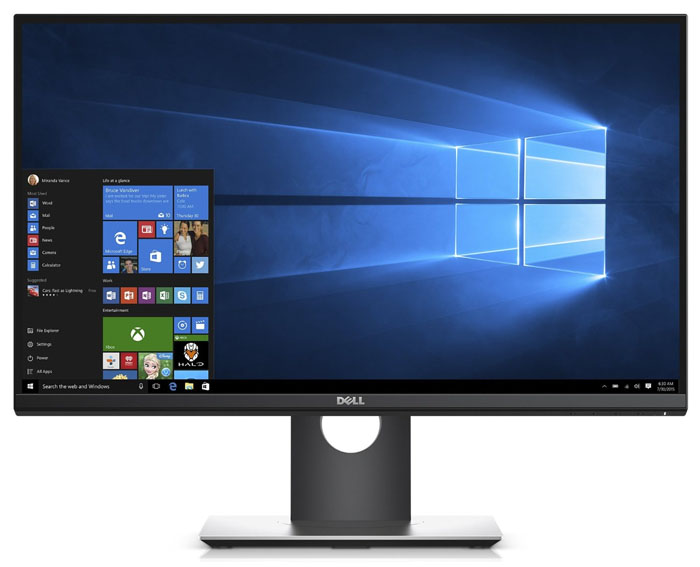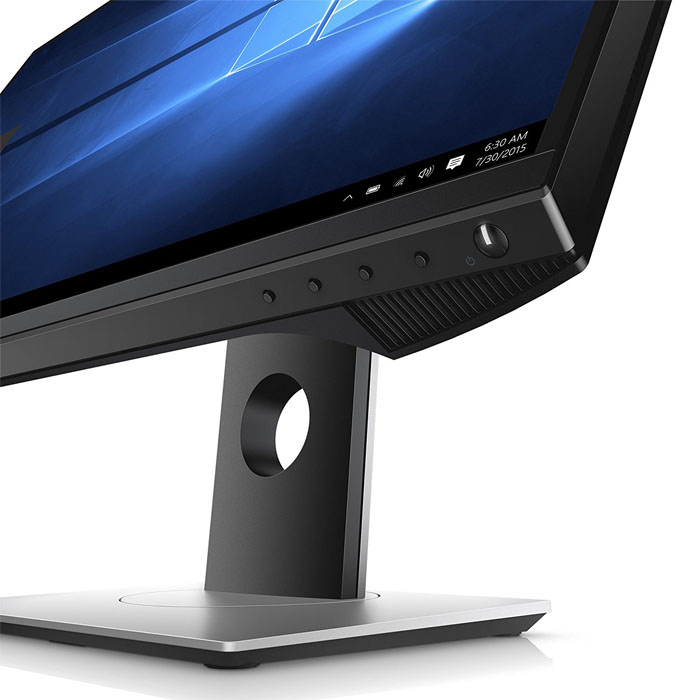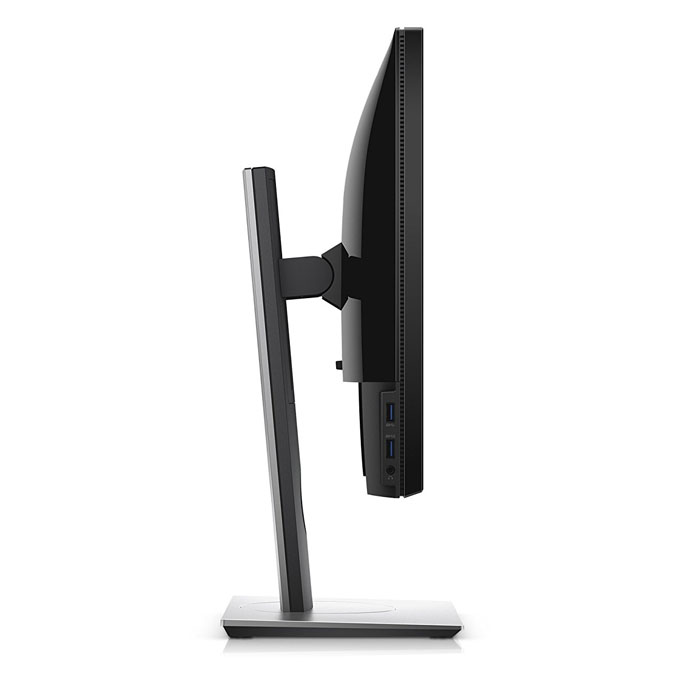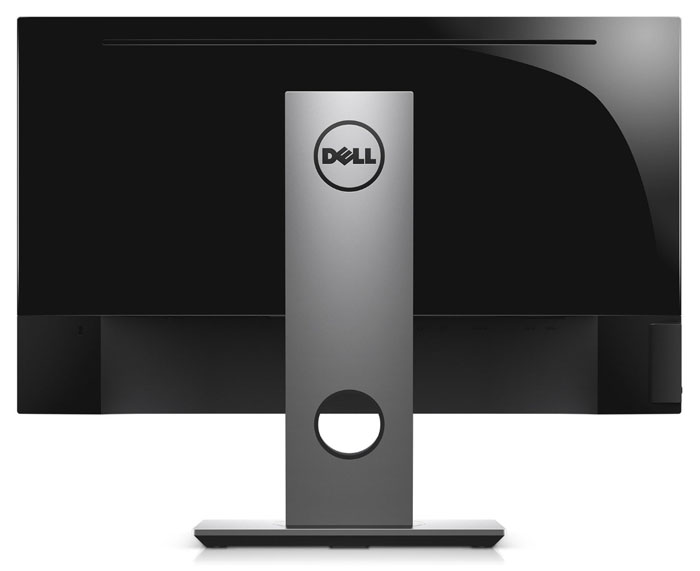Early Verdict
If Dell were to fix the gamma issues we encountered, the S2417DG would earn our Editor’s Choice Award. Motion processing is so smooth and completely free of ghosting, jitter and tearing that we had a hard time tearing ourselves away. The ULMB feature is less useful but it’s there for users that want it. It’s not the least-expensive 24" gaming monitor out there but it outperforms much of the higher-priced competition. This display should be at or near the top of most gamers’ short lists. Highly Recommended.
Pros
- +
Superior motion processing
- +
Out-of-box color accuracy
- +
QHD resolution
- +
165Hz refresh rate
- +
Gaming features
- +
6mm bezel
Cons
- -
Contrast
- -
Gamma tracking
- -
ULMB reduces light output and contrast
- -
Viewing angles
Why you can trust Tom's Hardware
Introduction
Dell has long marketed an impressive line of monitors for every conceivable use, but only recently has it come out with true gaming displays. The S-series is billed as gaming and multimedia appropriate, but only a couple of models have sufficient cred for the enthusiast crowd.
Now that adaptive refresh technology has taken hold in the form of the AMD FreeSync and Nvidia G-Sync brands, it’s pretty much a requirement that any gaming monitor have one. To that end, Dell has introduced the S2417DG. It’s a 24-inch TN screen with QHD resolution, Nvidia G-Sync, ULMB blur reduction, and a 165Hz maximum refresh rate. Let’s take a look.
Specifications
We suspect there will be a few groans about the use of a TN panel on this monitor, but the fact remains that it is the easiest and least expensive way to achieve low input latency and quick response times. Dell claims one millisecond for the gray-to-gray test. You’ll see in our results on page five that it is indeed one of the quickest monitors we’ve ever measured.
For those wishing to leave FHD resolution behind, the S2417DG is an ideal candidate. QHD is more often seen in 27" screens, so its inclusion here means a nice and tight pixel density of 122ppi instead of the 109ppi seen in the larger panel. It’s a noticeable bump in image quality, but the difference is small enough that Windows elements are still readable at normal viewing distances.
This monitor is packed with pretty much everything a gamer could want: 165Hz refresh, ULMB, G-Sync, and one of the thinnest bezels we’ve seen. A white LED backlight, coupled with a fairly new AU Optronics part, offers good output, reasonable contrast, and solid out-of-box color accuracy. But how does it play? Let’s get to the unpacking and find out.
Packaging, Physical Layout & Accessories
Dell has become an expert at designing packing that provides maximum security with minimal material. Rather than foam blocks, paper pulp is molded into a stiff shell that holds the contents in place and weighs almost nothing. The box opens clamshell-style so you can lift everything out easily. The base and upright go together with a single captive bolt; then you snap the assembly onto the panel. No tools required. Bundled cables include DisplayPort, USB 3.0, and IEC power. There is a printed quick start guide and a CD with drivers and documentation.
Product 360





The S2417DG appears to be bezel-free when the power’s off, but there is a 6mm frame around the image at the top and sides and a wider 15mm strip at the bottom. It’s the thinnest border we’ve seen, making the Dell an ideal candidate for multi-screen setups. The anti-glare layer has a 3H hardness rating and maintains a tight air gap for high clarity and zero grain or softness. Light rejection is excellent, and you can set this panel up just about anywhere.
Get Tom's Hardware's best news and in-depth reviews, straight to your inbox.
The controls consist of tiny buttons along the bottom right of the bezel. They take a bit of pressure to activate, and we found ourselves having to double-tap on occasion. Small icons appear on the screen to indicate their function. The power button and LED glows a steady white when on and pulses gently during standby.
The stand allows for full tilt, swivel, height, and portrait adjustments. Movements are reasonably solid but there's a little extra friction involved. But there is no excess play or movement once you find your ideal position.
The panel is a slim 2" thick, and you’ll find two USB 3.0 ports and a headphone jack on the left side. The smooth taper seen in the photo has a flat area in the center to make fitting aftermarket brackets easy.
The back is a single piece of smooth-sculpted plastic with a high-gloss finish. A 100mm VESA mount lurks beneath the included upright. Ventilation is stealthily-handled by thin grills across the back and around the panel’s perimeter. The tiny speakers are hidden back there as well, and though polite, will suffice for quiet gaming or other tasks.
The bottom-facing input panel contains two more USB 3.0 downstream ports plus the upstream connector. You also get HDMI 1.4 and DisplayPort 1.2. G-Sync and 165Hz are only possible over DP. The HDMI port will handle 2560x1440 signals at up to 60Hz.
MORE: Best Computer Monitors
MORE: How To Choose A Monitor
MORE: Display Calibration 101
MORE: The Science Behind Tuning Your Monitor
MORE: All Monitor Content

Christian Eberle is a Contributing Editor for Tom's Hardware US. He's a veteran reviewer of A/V equipment, specializing in monitors. Christian began his obsession with tech when he built his first PC in 1991, a 286 running DOS 3.0 at a blazing 12MHz. In 2006, he undertook training from the Imaging Science Foundation in video calibration and testing and thus started a passion for precise imaging that persists to this day. He is also a professional musician with a degree from the New England Conservatory as a classical bassoonist which he used to good effect as a performer with the West Point Army Band from 1987 to 2013. He enjoys watching movies and listening to high-end audio in his custom-built home theater and can be seen riding trails near his home on a race-ready ICE VTX recumbent trike. Christian enjoys the endless summer in Florida where he lives with his wife and Chihuahua and plays with orchestras around the state.
-
Blair_1 It's a shame this monitor is so much more expensive in Canada, $739 CAD which is about $545 USD. That's not even including taxes :(Reply -
apertotes For the love of God, add contrast information to the chart in the first page. It's the single most important piece of data after the resolution.Reply -
Robert-Jan Does this kind of screen support Nvidia 3D Vision? The refreshrate is more than enough since 120hz sufffices......Reply -
heyhihowyadurrin Reply18861970 said:The refreshrate is more than enough since 120hz sufffices......
For you. Some people want more. Thats why BenQ is releasing 240hz monitors.
http://zowie.benq.com/en/product/monitor/xl/xl2540.html -
s4fun I never thought I would say this, but DO NOT buy Dell monitors especially of the current vintage. Dell's quality control has gone to hell. I had to buy 6 of the S2716DG the 27" version of this thing and return 5 of them just to get one without a bad pixel, or some other defect. If it weren't for Best Buy return policy I would have been SOL.Reply -
s4fun The bad ones have defects and failure modes of the follow:Reply
1. Bad pixels - usually pixel stays black or fails to get past dark gray
2. Buzzing Coil whine, some much louder than others
3. Backlight white is not always the same "white" and it differs from monitor to monitor, and changing the brightness setting does NOT equalize them. Some "white" looks more yellow than others, the variation is too wide for something that should be consistently manufactured.
4. Deep sleep failure mode 1: refuse to wake up
6. Deep sleep failure mode 2: refuse to go into deep sleep mode even with the setting enabled and sits and vampires 12 watts of power while supposedly in "off" state, screen is black.
5. Bezel plastic has rough cut unpolished edges but not always at the same spots. -
Nintendork What a piece of trash.Reply
Until OLED reigns supreme, we must only allow AMVA+ panels with 60-120-240Hz. TN looks like c*rap and IPS with the annoying IPS glow too. -
shrapnel_indie Reply18861849 said:For the love of God, add contrast information to the chart in the first page. It's the single most important piece of data after the resolution.
You don't really want MFR contrast info... only because, like TVs, it's MFR subjective. If TH or other testers have a specific test that uses the same criteria across all brands and models, then fine... it will actually be a comparable attribute. (Someone PLEASE correct me if I am wrong here.) -
-> TN panel, nearly 2017. As if there aren't a dozen or more G-Sync TN monitors already in all refresh rates and resolutions.Reply
What a waste. -
apertotes Reply18864998 said:18861849 said:For the love of God, add contrast information to the chart in the first page. It's the single most important piece of data after the resolution.
You don't really want MFR contrast info... only because, like TVs, it's MFR subjective. If TH or other testers have a specific test that uses the same criteria across all brands and models, then fine... it will actually be a comparable attribute. (Someone PLEASE correct me if I am wrong here.)
If they add Response time and Brightness, which manufacturers also lie about, I do not see why not add contrast too. We then have the actual review to see the real number, but at least, if the chart on first page says contrast 1000:1, we know that the actual contrast will be between 800:1 and 1100:1, and not 4000:1.
